Blog Entry Written by Team: Finless Porpoise
Team Members: Yanling Wang (Queen’s), Shidan Wen (BNU), Renata Sampaio (Laurier)
Weather: Cloudy, Temp 33ºC
Wow what a day! Today was our first day learning about wetland assessments at Gonghu Bay. We arrived at Gonghu Bay where we met Mrs. Hua Cheng who is an employee of an eco-engineering company, Jiangda, which has taken up the post-project management and maintenance of the bay. As we shuffled onto a boat we observed some of the different species inhabiting the wetland such as the black-crowned night heron (Nycticorax nycticorax) soaring through the sky or little grebes (Tachybaptus ruficollis) swimming and diving in the wetland.
Mrs. Cheng explained how Jiangda has been maintaining the restoration of the Gonghu Bay and that they were on Phase IV of the total project. She further explained how the bay undertook four main steps into the reconstruction of the wetland. Phase I consisted of dredging, or the removal of contaminated aquaculture sediment, from the bottom of the bay to produce new environments which aided in increasing the diversity of species found in the wetland. Phase II focused on the improvement of habitat in which sloped, vertical and rocky banks were engineered for the natural aesthetics, the separation of Gonghu Bay from Tai Lake and the prevention of erosion, respectively. Next, Phase III centered on the introduction of functional plants and benthic invertebrates, such as snail and mussels, as well as fish species back into the bay. She continued to report that the health of the wetland ecosystem had increased and that the bay now included 70 plant species combined with 20 fish species. Finally, Phase IV was the maintenance and management of the post-project to assure that the wetland’s ecosystem is progressing and so that they may start to improve Tai Lake in a similar fashion.
We headed back to the base where Dr. Lougheed gave a lecture of bird identification and characteristics used to identify different species of birds such as size, color, beak, wing shape and most importantly range. After a quick rest we went back into the field to undertake the task of identify the diversity of birds in the wetland. We saw and identified several different species which included but were not limited to the black-crowned night herons (Nycticorax nycticorax), grebes (Tachybaptus ruficollis), intermediate egrets (Mesophoyx intermedia), Chinese grey shrikes (Lanius sphenocercus), mynah (Acridotheres tristis) and light-vented bulbuls (Picnonotus sinensis). We regrouped at a local coffee shop while enjoying ice cold cappuccinos and coca-colas before making our way back for to base.
Once back on the base Dr. Wang explained some of the different methods we would be using out on the field the following days to evaluate the water quality of the wetland. He demonstrated how to use several instruments which would measure the salinity, dissolved oxygen, turbidity, conductivity and pH of the water and how these measurements are vital in defining the overall status of health of the aquatic ecosystem. We concluded the day at Gonghu Bay with Dr. Lougheed enlightening the group with specie concepts which partake in biomonitoring which included; indicator species, keystone species, flagship species and umbrella species and outlined the importance of such species in supervising ecosystems. It was truly a wonderfully jam-packed day full of exploration and discovery in uncovering what it takes to nurture a reconstructed aquatic ecosystem, such as the Gonghu Bay wetland, plus the effort it takes to maintain such a project for the long term.
今天是非常充实的一天,我们在贡湖学习了湿地生态系统的评估。在游船上,来自江达公司的程老师为我们介绍了湿地修复工程后期维护的情况。贡湖湾生态修复是整个太湖修复工程的第四期。从2012年至今,原本的一百五十多个鱼塘已被移除,政府出资支持退渔还湖,以生物修复的方法重建了2.32平方公里的湿地,从原来的超五类水净化成了如今的三到四类水。整个重建工程分为三个步骤:第一步是清淤,清除湖底被鱼塘长期污染的淤泥,堆积成湖中的小岛,提供了多样化的生境;第二步是重建堤岸,因地制宜修建了三种不同类型的湖堤(1自然缓坡、2垂直隔离带与3防止腐蚀的岩岸);第三步是动植物的配置,引入沉水植物和底栖动物(如螺、蚌类等无脊椎动物)从而提升生态系统的自净能力,另外还引入了多种鱼类来完善湿地生态系统食物链。如今,整个贡湖湾保有七十多种植物与二十多种鱼类。
接下来,Dr. Lougheed教授为我们介绍了鸟类物种识别的基本方法。黎明(或黄昏)时是观察鸟类的最好时间。鸟类物种识别主要依赖以下特征:体型、颜色及纹理特征、喙及翅膀的形状、鸣声、冠羽、行为、栖息地和分布范围。根据这些要领,我们在野外进行了实践。沿着湖岸,我们观察到了许多种不同的鸟类,例如黑冠夜鹭(Nycticorax nycticorax),小鷿鷈(Tachybaptus ruficollis),中白鹭(Mesophoyx intermedia),楔尾伯劳(Lanius sphenocercus),白头鹎(Picnonotus sinensis)。
稍作休息整顿后,王教授为大家介绍了评估湿地水质的指标以及测量方法。使用一系列的设备,我们可以测量水体的pH、盐度、溶氧量、浑浊度、电导度,以及周围植被的覆盖面积。随后,我们来到湖边学习了测量工具的使用方法。最后,Lougheed教授讲解了评估生态系统健康的生物指标,其中包括指示种、基石种、旗舰种和伞护种。
通过一天的学习与与实践,我们了解了贡湖湾湿地修复工程的概况,学习了鸟类识别基本方法和湿地生态评估方法,为接下来两天的工作做好了准备。
- Introduction to GongHu wetland
- Professor Wang demonstrating some of the instruments used in water chemistry assessment
- Comparison of the water inside and outside of the reconstructed wetland
- Common moorhen
- Little grebe
- Juvenile black-crowned night heron
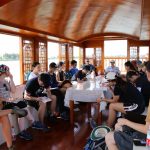
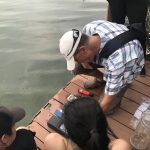
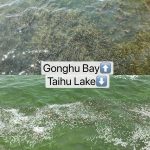
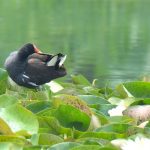
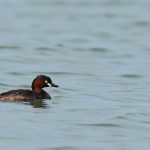

Leave a Reply